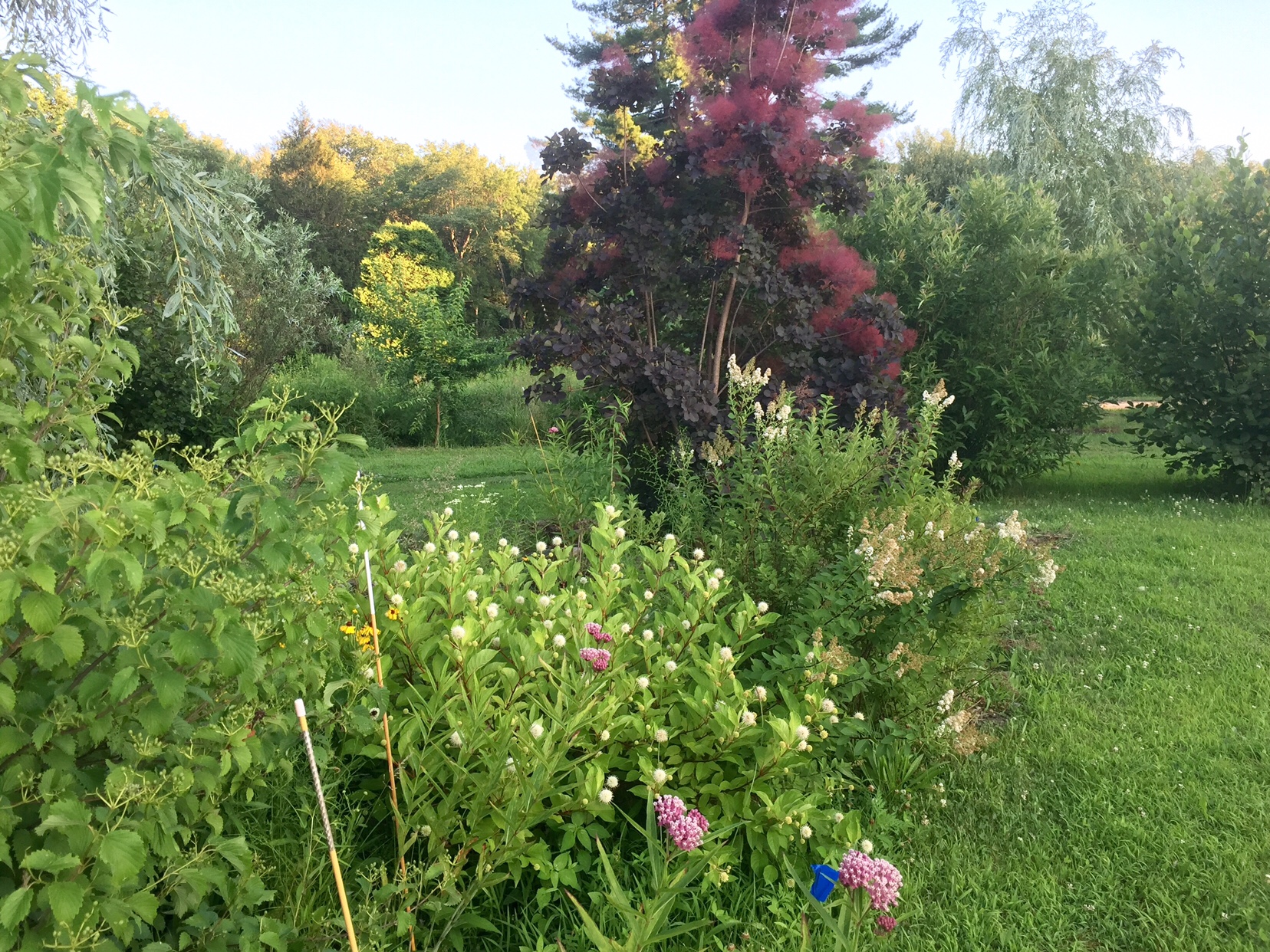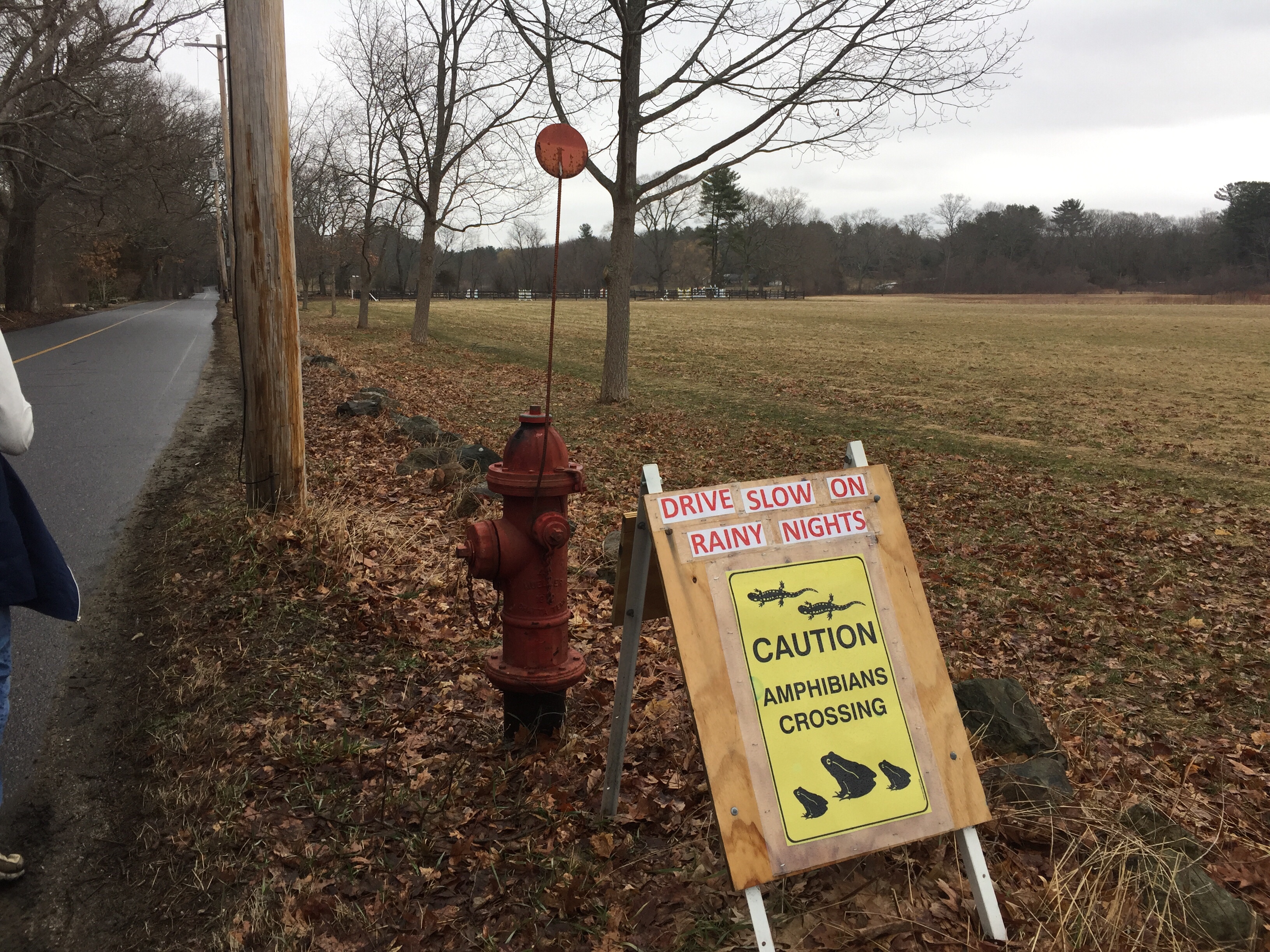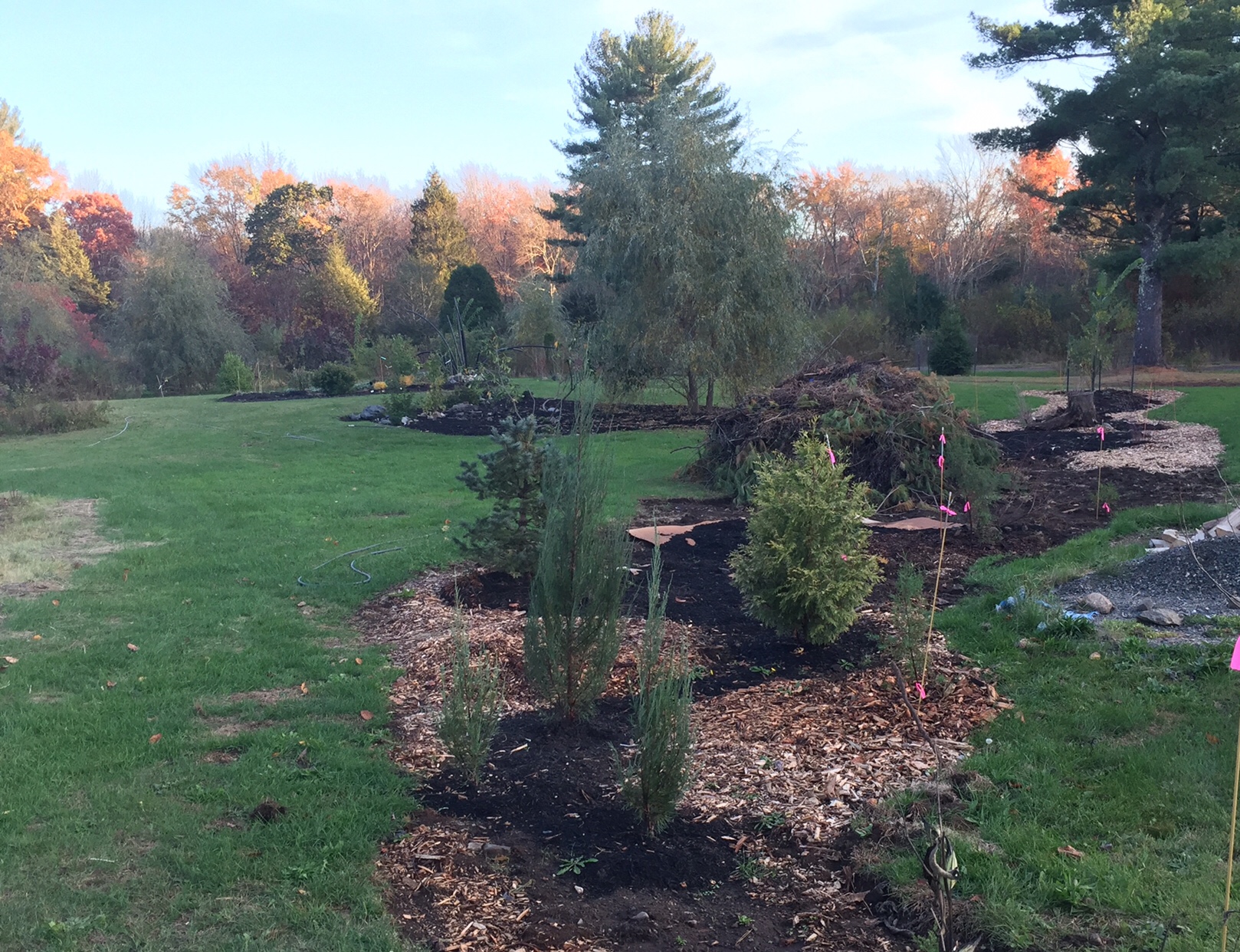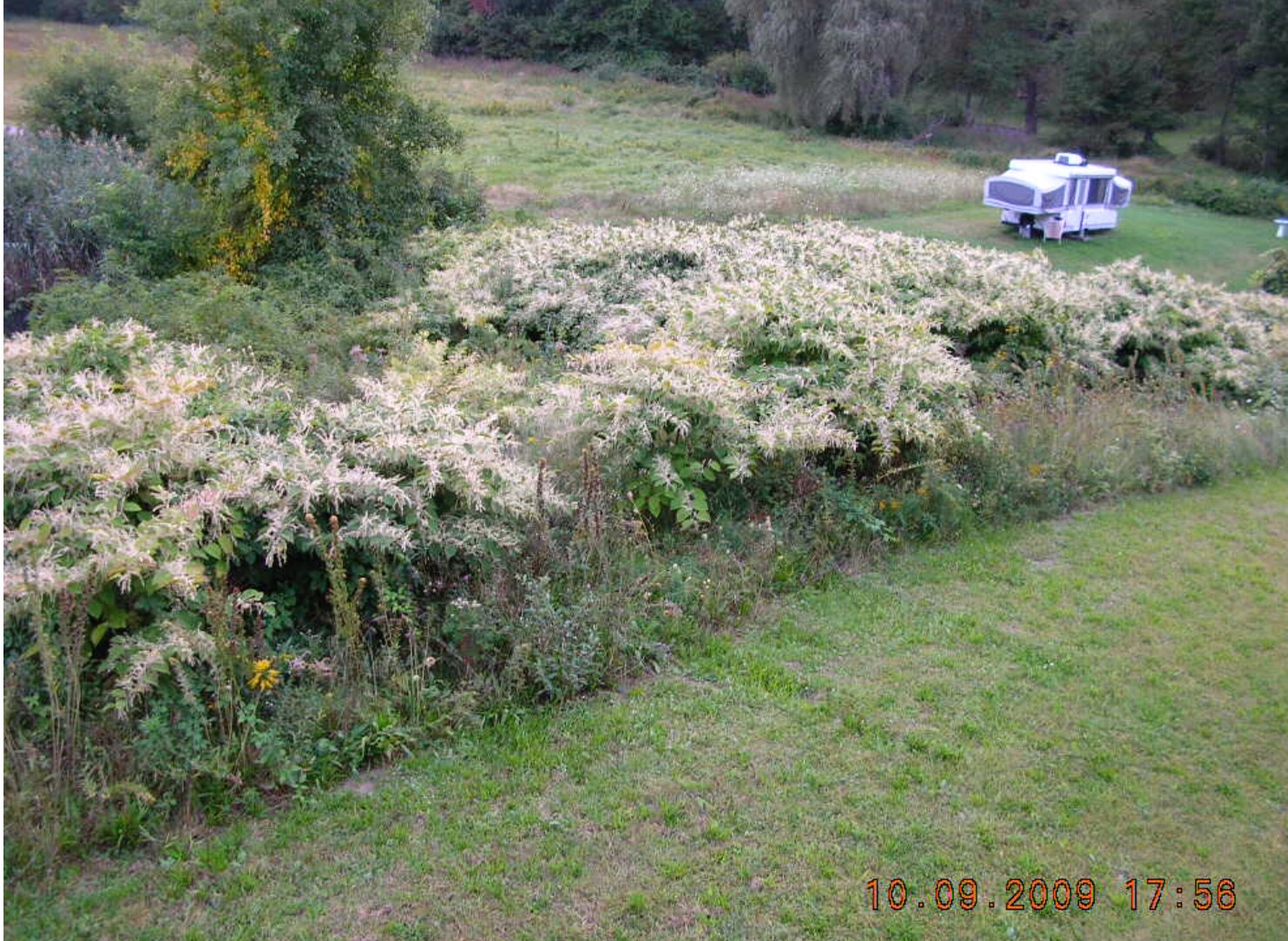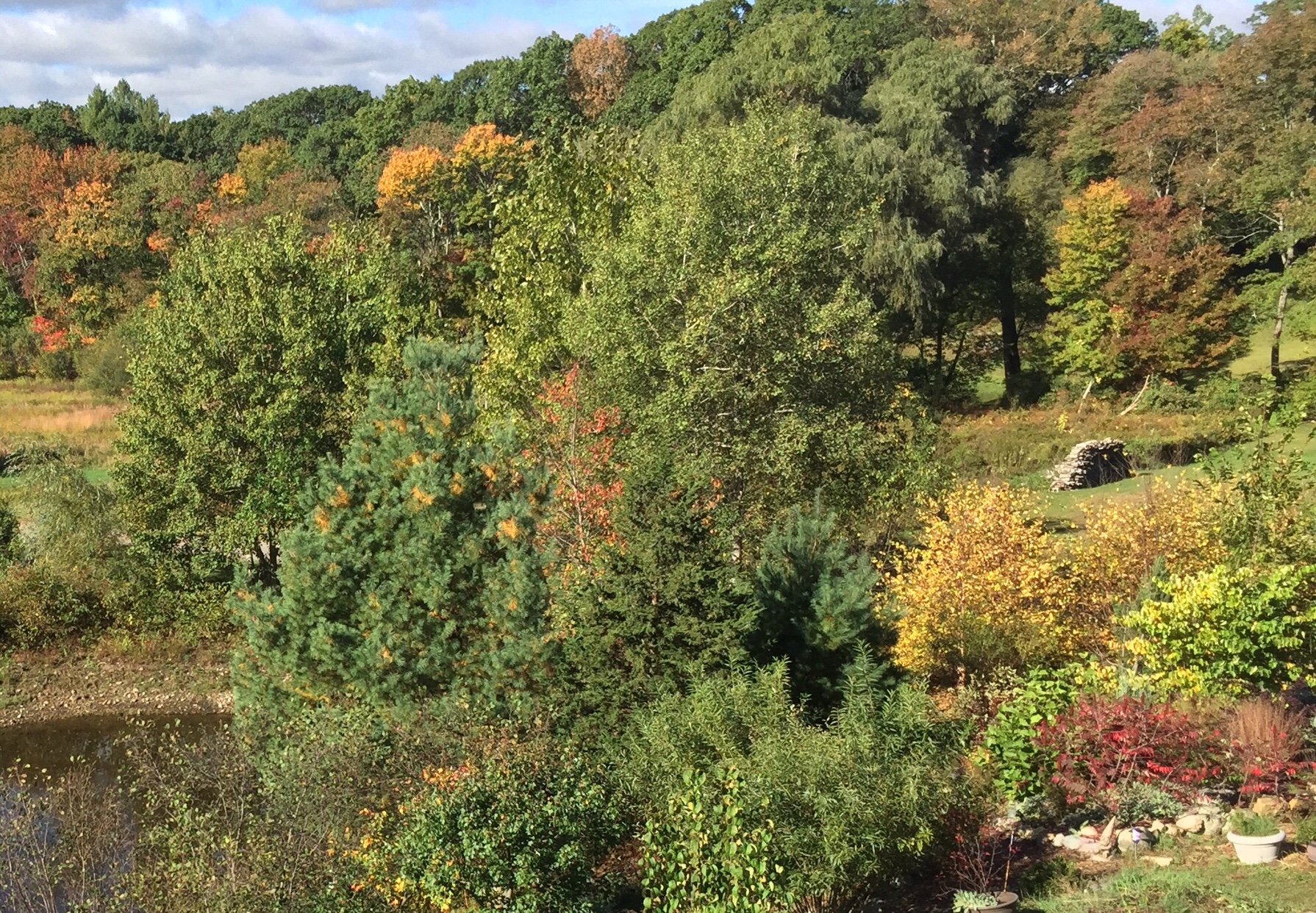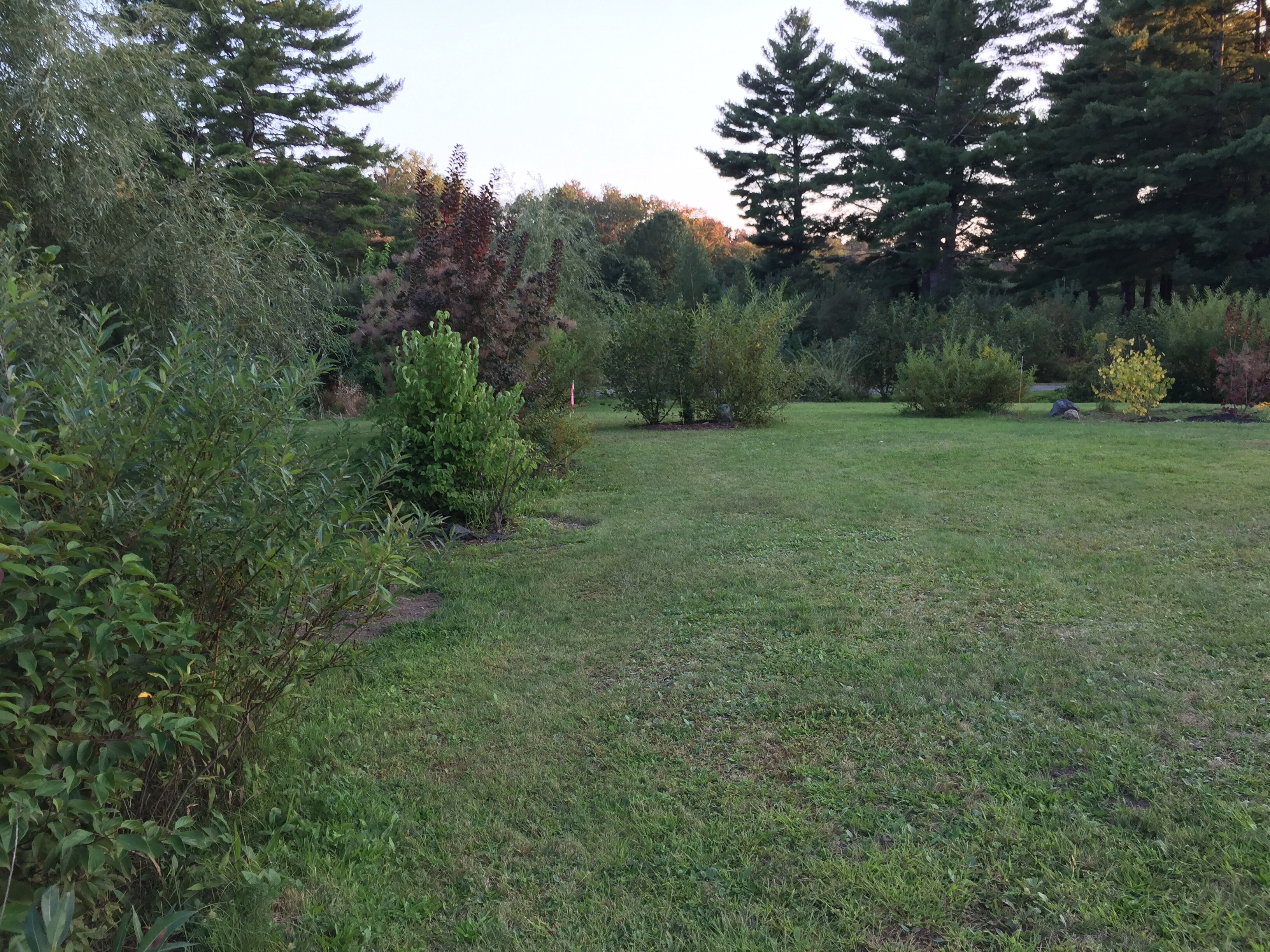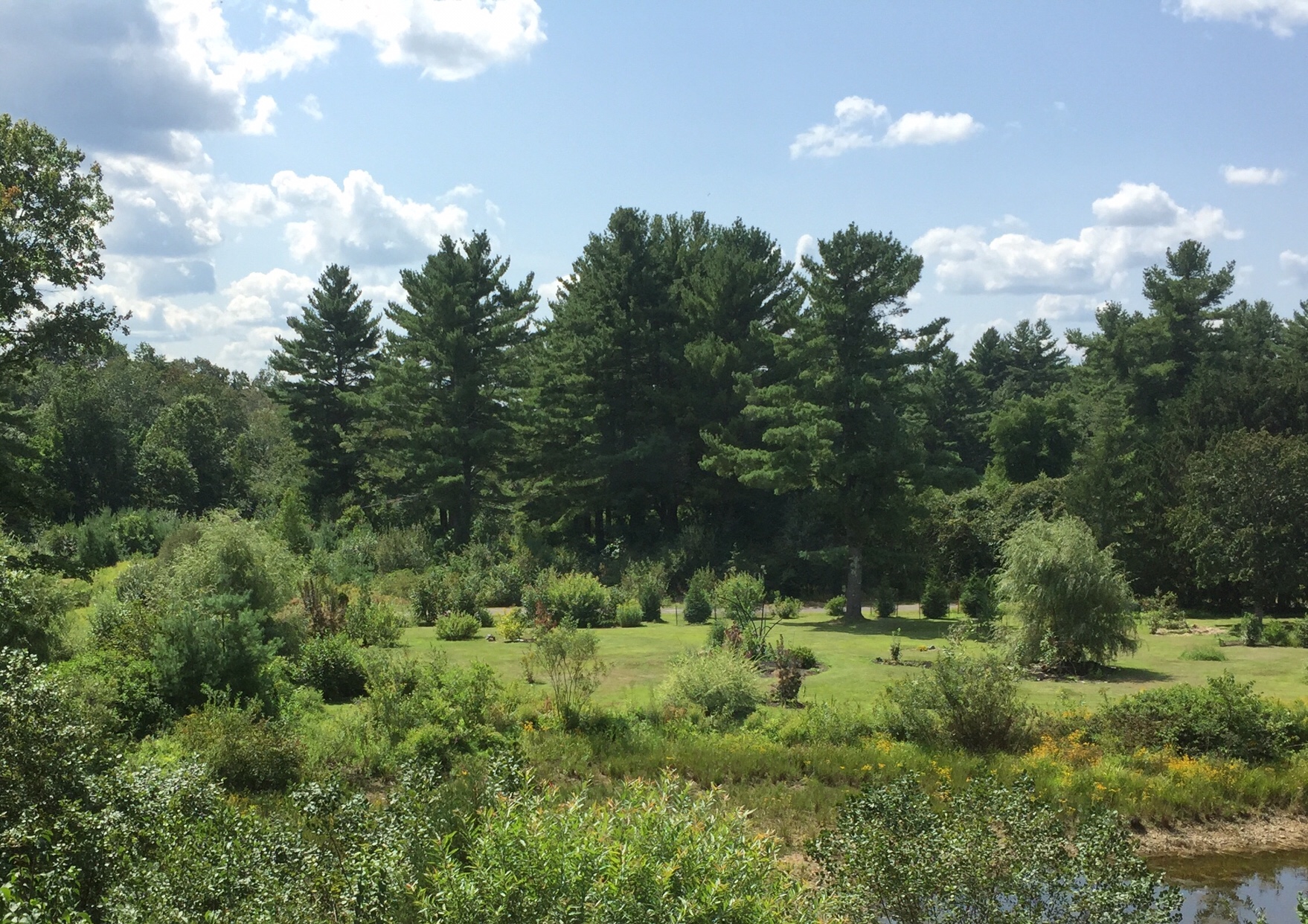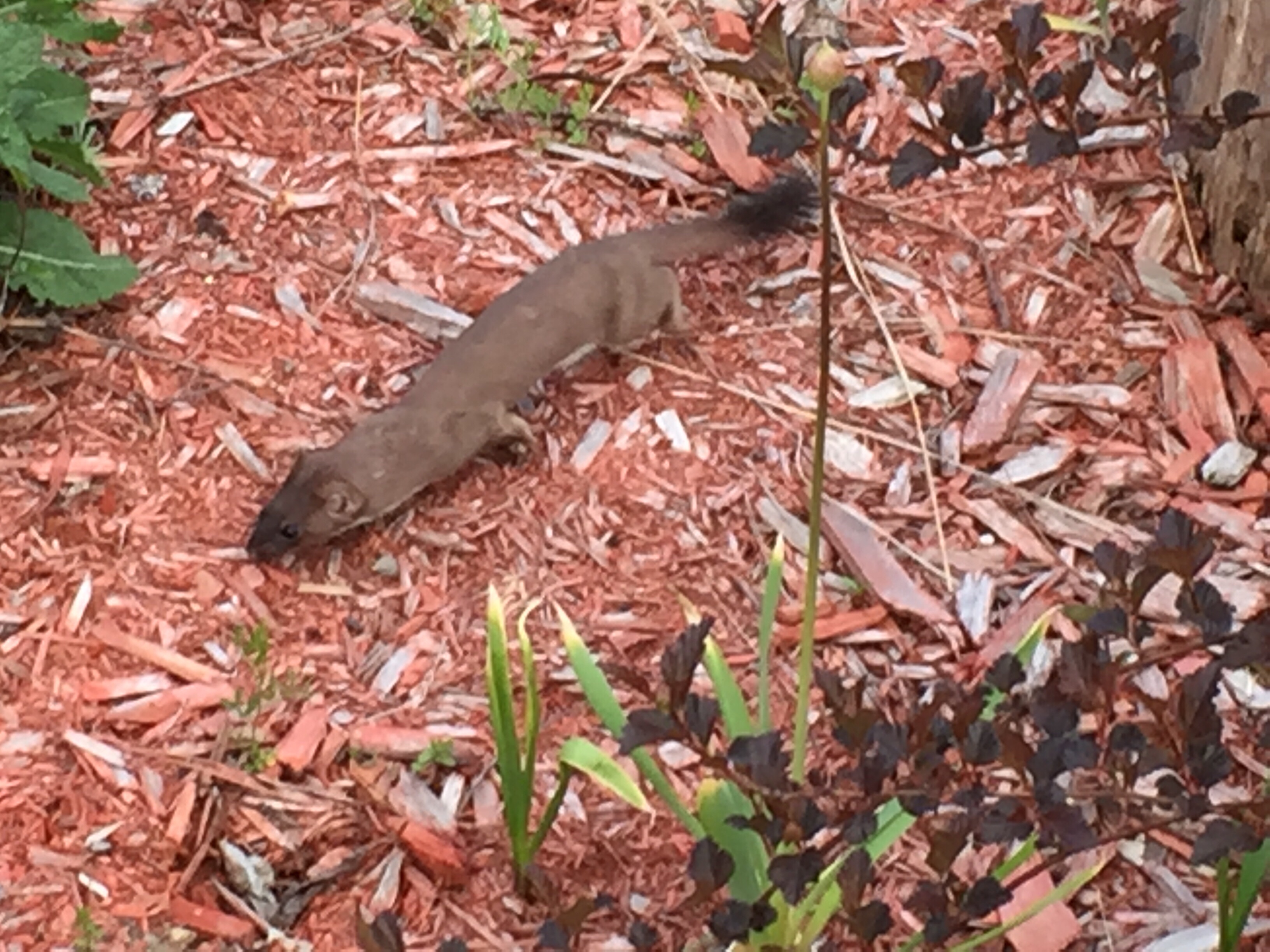Here’s the buttonbush in context – it’s part of a large swath of plantings on the east side of the back acre. This is an area that’s extremely wet in the spring. Formerly, about 6 years ago, there was nothing here but the low part of a mown field. Before that, it was a field with lots of invasive plants that hardly ever got mowed. These days, there’s a lot more cover for wildlife. The plants here now are mostly natives that support various species of animals and insects. From left to right: viburnum, swamp milkweed, buttonbush, false spiraea, purple smokebush, alder, willow.
